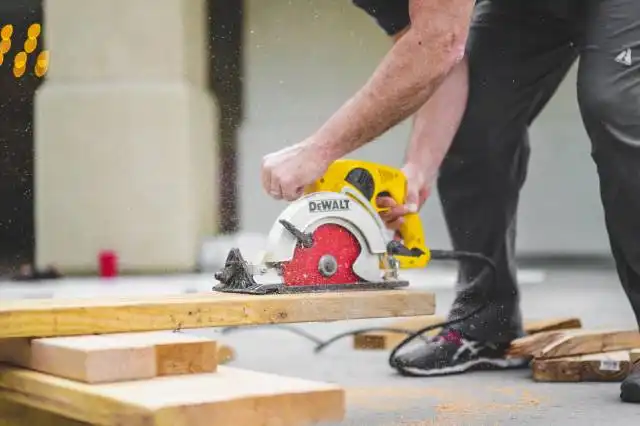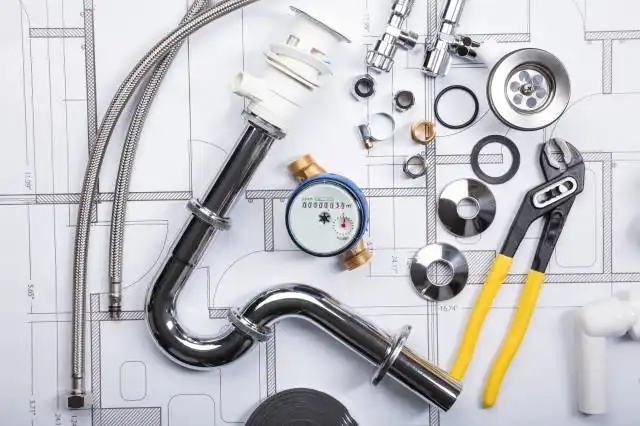Start a Grease Removal Business
Harnessing Liquid Gold: The Lucrative Venture into Grease Removal Business
| Updated


GREASE REMOVAL BUSINESS
Dive into the surprisingly slippery world of the grease removal business! The grease removal business offers a clean path to profits by specializing in the removal, collection, and recycling of used grease from restaurants, factories, and other establishments. Not only will you be helping to keep kitchens and workplaces clean and safe, but you'll also be contributing to a greener planet by ensuring this waste is properly managed and repurposed. Grease be gone, and let the cash flow begin!
Jump to Business Plan
RELATED BUSINESS IDEAS
Browse ALL Construction & Real Estate Business Ideas
Discover Your Perfect Domain
Unlock the door to your online success with our hand-picked selection of premium domain names. Whether you're starting a new venture or rebranding an existing one, the right domain can set the tone for your digital presence. Browse through our curated list, each with its unique potential to enhance your brand's visibility and credibility.
GREASE REMOVAL MINI BUSINESS PLAN
This a quick reality check to help you identify the strengths and weaknesses of your business concept before you dive in.
Expected Percent Margin:
- Gross Margin: 60-70%
- Net Profit Margin: 20-30%
Earnings Expectations:
- Daily Earnings: $150 - $300
- Weekly Earnings: $750 - $1,500
- Monthly Earnings: $3,000 - $6,000
- Annual Earnings: $36,000 - $72,000
Actions to Hit Those Numbers:
Establish Customer Base:
- Client Acquisition: Target local restaurants, cafeterias, commercial kitchens, and bakeries.
- Contracts: Strive for long term service contracts with guaranteed revenue.
Service Execution:
- Equipment: Make sure to have high-quality grease removal equipment that lasts.
- Staffing: Hire trained technicians who can execute the service proficiently.
Marketing and Customer Retention:
- Word-of-mouth: Provide an excellent service that generates positive word-of-mouth.
- Social Media: Regularly update your social media pages with images of your work and customer testimonials.
Cost Control:
- Employee Expenses: Maintain a relatively small team of technicians to minimise labor cost.
- Inventory Management: Regularly service your equipment to extend its lifespan.
Business Operations:
- Service Hours: Flexible hours to accommodate the needs of restaurant, bakery, and cafeteria owners.
- Transactions: Aim for 5-10 jobs per day with an average cleaning fee of $50-$75.
These are generalized estimations and can vary depending on location, economic conditions, and individual business strategies. Always consult with a financial advisor for personalized advice.
NOT WHAT YOU HAD IN MIND? Here are more ideas



Browse ALL Construction & Real Estate Business Ideas
Grab Your Business Website Name
Before you get caught up in the whirlwind of setting up your business, invest in a domain name. It's a small but significant step that lays the foundation for your brand and makes it easier for customers to find and trust you. Just like you wouldn't build a house without securing the land first, don't build a business without securing your domain name.
"Why? Can't that wait?" Here's why it shouldn't
Step 1: Determine if Grease Removal Business is Right for You
Breakdown of Startup Expenses
Before starting a grease removal business, it is important to understand the costs associated with getting the business up and running. This includes the cost of purchasing the necessary equipment, such as a grease trap, a truck, and a pressure washer. Additionally, the cost of obtaining any necessary permits and licenses should be taken into account. It is also important to factor in the cost of marketing and advertising, as well as any other costs associated with getting the business off the ground.
Breakdown of Ongoing Expenses
Once the business is up and running, there are certain expenses that will need to be taken into account on an ongoing basis. This includes the cost of fuel, maintenance of the equipment, and any other supplies that may be needed. Additionally, the cost of insurance should be taken into account, as well as any other costs associated with running the business on a daily basis.
Examples of Ways to Make Money
There are a number of ways to make money with a grease removal business. One of the most common ways is to charge a fee for each job completed. Additionally, some businesses may offer additional services such as cleaning and maintenance of the grease traps, which can also be a source of income. Other businesses may offer discounts for bulk orders or for repeat customers, which can also be a way to increase profits.
Step 2: Name the Business
When deciding on a name for the grease removal business, it is important to make sure the name is memorable and easy to spell. It should also be unique enough to stand out from other businesses in the area. Additionally, it is important to make sure the name is not already in use by another business. To ensure this, a business name search should be conducted to make sure the name is available to use.
When coming up with a name, it is important to think about what the business does and how it can be conveyed in the name. For example, if the business specializes in removing grease from restaurant kitchens, the name could include words such as “grease”, “kitchen”, or “restaurant”. Additionally, it is important to consider the target audience and make sure the name appeals to them.
Once the name has been chosen, it is important to make sure the domain name is available. This is important for creating a website and email address for the business. Additionally, the business name should be trademarked to ensure it is legally protected.
Finally, it is important to make sure the name is easy to pronounce and spell. This will make it easier for customers to remember and find the business. Additionally, it is important to make sure the name is not too long or complicated. A simple, easy to remember name is the best option.
Step 3: Create a Business Plan
Creating a business plan is essential for any business, especially one that involves grease removal. A business plan should include an executive summary, a description of the business, a market analysis, an organizational structure, a description of the products and services offered, a marketing plan, a financial plan, and a timeline for implementation.
The executive summary should include the purpose of the business, the target market, the competitive advantage, and the financial goals. The description of the business should include the legal structure, the location, the ownership, and the mission statement. The market analysis should include the target market, the competition, and the pricing strategy. The organizational structure should include the management team, the staff, and the roles and responsibilities of each.
The description of the products and services should include the types of services offered, the pricing, and the customer service policies. The marketing plan should include the promotional strategies, the advertising channels, and the budget. The financial plan should include the startup costs, the ongoing expenses, and the sources of funding. The timeline should include the milestones and the projected timeline for completion.
Step 4: Obtain Licenses and Permits
Before starting a grease removal business, it is important to research and obtain the necessary licenses and permits. Depending on the state, local, and federal regulations, the licenses and permits may vary. It is important to check with the local government to determine what is required. Additionally, it is important to check with the local health department to ensure that all necessary permits are obtained. It is also important to check with the local fire department to make sure that all safety regulations are met.
Apply for Licenses and Permits
Once the necessary licenses and permits have been identified, it is time to apply for them. Depending on the jurisdiction, the application process may vary. It is important to fill out all forms accurately and completely. Additionally, it is important to provide all necessary documentation and fees. Once the application is submitted, it is important to follow up with the local government to ensure that the application is being processed.
Obtain Necessary Insurance
In addition to obtaining the necessary licenses and permits, it is important to obtain the necessary insurance. This may include general liability insurance, property insurance, and workers’ compensation insurance. It is important to shop around to find the best rates and coverage. Additionally, it is important to make sure that the insurance is up to date and that all necessary paperwork is filed with the local government.
Ensure Compliance
Once all of the necessary licenses and permits have been obtained, it is important to ensure that the business remains in compliance. This may include regular inspections and audits by the local government. Additionally, it is important to keep all paperwork up to date and to make sure that all necessary fees are paid. By ensuring compliance, the business will remain in good standing with the local government.
Step 5: Secure Financing
When starting a grease removal business, there are a variety of financing options available. These include traditional bank loans, venture capital, and angel investors. Bank loans are typically the most common option, as they offer competitive interest rates and flexible repayment terms. Venture capital and angel investors are also viable options, but they require more upfront capital and may come with more stringent terms. It is important to research all financing options to determine which one best fits the needs of the business.
Create a Business Plan
Creating a business plan is essential for securing financing for a grease removal business. The plan should include a detailed description of the business, its goals, and its projected financials. It should also include a marketing plan, which outlines how the business will reach its target market and generate revenue. Additionally, the plan should include a competitive analysis, which looks at the competition and how the business will differentiate itself. Finally, the plan should include a detailed budget, which outlines the expected costs of starting and running the business.
Apply for Financing
Once the business plan is complete, the next step is to apply for financing. This involves submitting the business plan to potential lenders and investors. It is important to provide as much detail as possible in the application to ensure that the lender or investor has a clear understanding of the business and its goals. Additionally, it is important to be prepared to answer any questions that the lender or investor may have. Once the application is submitted, the lender or investor will review it and make a decision.
Step 6: Market Your Business
Once you have your business name, logo, and website, it is time to start marketing your business. There are many ways to market your business, including online advertising, direct mail, print advertising, and word of mouth. Online advertising is a great way to reach potential customers and can be done through search engine optimization, pay-per-click advertising, and social media. Direct mail is another great way to reach potential customers, as it allows you to target specific neighborhoods or zip codes. Print advertising is also a great way to reach potential customers, as it allows you to reach a larger audience. Finally, word of mouth is one of the most effective ways to market your business, as people are more likely to trust a recommendation from someone they know.
Develop a Pricing Strategy
Once you have determined your target market and have developed a marketing strategy, it is time to develop a pricing strategy. When determining your pricing strategy, it is important to consider your target market, the cost of materials, and the cost of labor. You should also consider the competition in your area and the pricing of similar businesses. Once you have determined your pricing strategy, it is important to make sure that your prices are competitive and that you are providing value to your customers.
Develop a Customer Service Strategy
Customer service is an important aspect of any business, and it is important to develop a customer service strategy for your grease removal business. This should include a plan for responding to customer inquiries, handling customer complaints, and providing customer support. It is also important to ensure that your customer service team is well-trained and knowledgeable about your services. This will help to ensure that your customers have a positive experience with your business.
Step 7: Purchase Equipment
The seventh step in starting a grease removal business is to purchase the necessary equipment. This includes items such as a pressure washer, a grease trap cleaning machine, a vacuum truck, and a variety of tools and supplies. It is important to research the best quality equipment for the job, as well as the most cost-effective options. Additionally, it is important to consider the ongoing maintenance costs of the equipment, as well as any additional costs associated with the purchase.
Financing Options
When it comes to purchasing the necessary equipment for a grease removal business, there are a variety of financing options available. These include traditional bank loans, small business loans, and even leasing options. It is important to research each option thoroughly to determine which one is the best fit for the business. Additionally, it is important to consider the interest rates and repayment terms associated with each option.
Insurance
It is also important to purchase the necessary insurance for the business. This includes general liability insurance, as well as any other insurance that may be required by the state or local government. Additionally, it is important to consider any additional insurance that may be necessary for the specific type of equipment being used.
Safety Equipment
Finally, it is important to purchase the necessary safety equipment for the business. This includes items such as safety goggles, gloves, and other protective gear. It is important to ensure that all employees are properly trained on the use of the safety equipment, as well as the proper safety procedures for the job. Additionally, it is important to ensure that the safety equipment is regularly inspected and maintained.
Step 8: Hire Employees
When hiring employees, it is important to consider the skills and experience they bring to the table. It is also important to consider the personality of the employee and how they will fit into the culture of the business. Additionally, it is important to consider the cost of hiring an employee and the cost of training them. It is also important to consider the legal aspects of hiring an employee, such as making sure they are legally allowed to work in the country.
Training Employees
Once the right employees have been hired, it is important to provide them with the necessary training to do their job. This can include providing them with the necessary tools and equipment, as well as teaching them the skills and knowledge they need to do their job. Additionally, it is important to provide employees with the necessary safety training to ensure they are working in a safe environment. It is also important to provide employees with the necessary customer service training to ensure they are providing excellent customer service.
Establishing Policies and Procedures
Once the employees have been hired and trained, it is important to establish policies and procedures to ensure the business is running smoothly. This can include establishing rules and regulations for the workplace, as well as setting expectations for employees. Additionally, it is important to establish a system of rewards and punishments to ensure employees are following the rules and regulations.
Monitoring Employees
Once the policies and procedures have been established, it is important to monitor employees to ensure they are following the rules and regulations. This can include conducting regular performance reviews and providing feedback to employees. Additionally, it is important to monitor employee attendance and productivity to ensure they are meeting the expectations of the business.
Step 9: Set Prices
Setting prices for a grease removal business can be tricky. It is important to consider the cost of materials, labor, and overhead when setting prices. It is also important to consider the local market and the competition. There are several pricing strategies that can be used to set prices. For example, a business can use a cost-plus pricing strategy, where the cost of materials and labor are added together and then a markup is added to the total. Another example of a pricing strategy is a competitive pricing strategy, where the business sets prices at or slightly below the competition.
Setting Prices
Once the pricing strategy is determined, the business should set prices for the services they offer. It is important to be realistic when setting prices and to make sure that the prices are in line with the local market. Additionally, the business should consider offering discounts or promotions to attract customers. Offering discounts or promotions can help to increase sales and bring in more business. Finally, the business should review their prices regularly to make sure they are still competitive and in line with the local market.
EXPLORE MORE CATEGORIES
Browse ALL Business Idea Categories
TAKE THE NEXT STEPS










